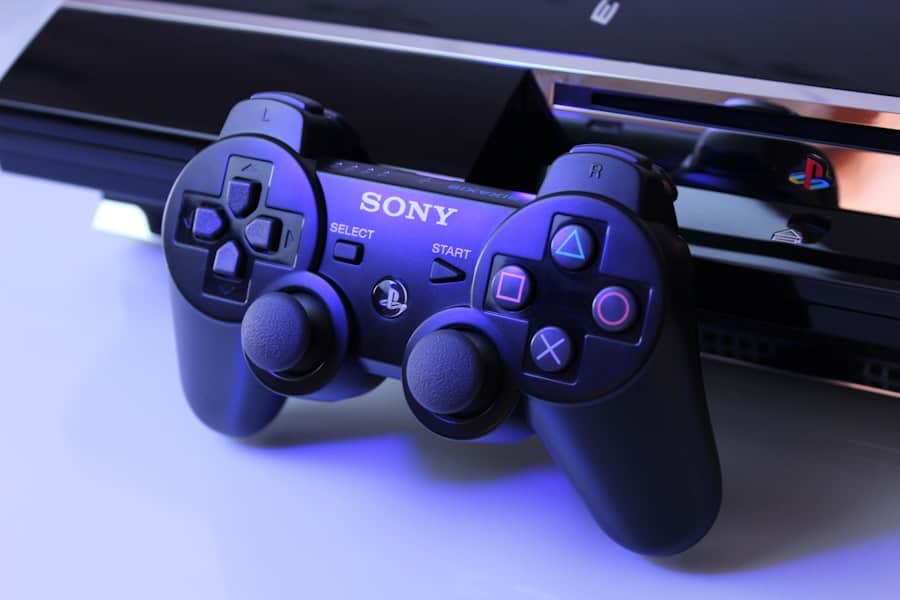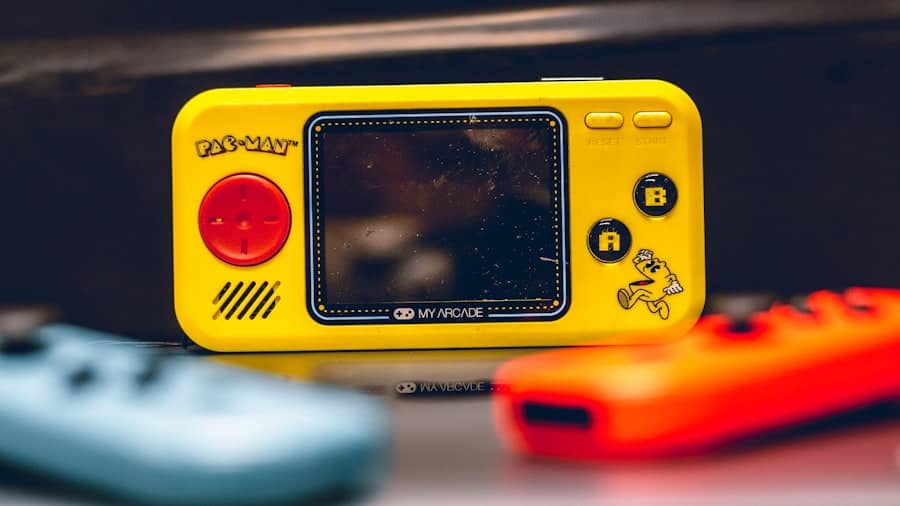Augmented Reality (AR) and Virtual Reality (VR) have emerged as transformative technologies that redefine how users interact with digital content. AR overlays digital information onto the real world, enhancing the user’s perception of their environment. For instance, applications like Pokémon GO have captivated millions by blending virtual creatures with real-world locations, encouraging players to explore their surroundings.
On the other hand, VR immerses users in entirely virtual environments, allowing them to experience scenarios that would be impossible in the physical world. This technology has found applications beyond gaming, including education, training simulations, and therapeutic settings, showcasing its versatility and potential impact on various industries. The rise of AR and VR experiences has been fueled by advancements in hardware and software, making these technologies more accessible to consumers.
As the demand for immersive experiences grows, so does the need for powerful devices capable of delivering high-quality graphics and seamless interactions. Gaming laptops, in particular, have become a focal point in this evolution, as they are designed to handle the intensive processing requirements of AR and VR applications. With their ability to deliver stunning visuals and responsive gameplay, gaming laptops are at the forefront of this technological revolution, bridging the gap between traditional gaming and immersive experiences.
Key Takeaways
- AR and VR experiences are revolutionizing the gaming industry by providing immersive and interactive gameplay.
- Gaming laptops have evolved to meet the demands of AR and VR technology, offering enhanced graphics and processing power.
- Optimized cooling systems in gaming laptops ensure that the hardware can handle the intense demands of AR and VR experiences.
- Integration of AR and VR technology in gaming laptops allows for a more immersive and realistic gaming experience.
- Customizable hardware and software options in gaming laptops cater to the specific needs of AR and VR gamers, providing a personalized gaming experience.
The Evolution of Gaming Laptops
From Bulky to Sleek Designs
However, as technology progressed, manufacturers began to innovate, leading to the development of sleeker designs without compromising on performance. Today’s gaming laptops are a testament to this evolution, boasting powerful processors, high-refresh-rate displays, and advanced cooling systems.
A Revolution in Graphics and Performance
The introduction of dedicated graphics cards has revolutionized the gaming experience, allowing for realistic graphics and smooth gameplay. This significant advancement has enabled gamers to enjoy a more immersive experience, with faster frame rates and detailed graphics.
Portability Meets Power
Furthermore, manufacturers have focused on creating lightweight models that are easy to transport, catering to the needs of gamers who attend LAN parties or travel frequently. This shift towards more portable yet powerful devices has opened up new possibilities for gaming on the go, making it easier than ever for enthusiasts to enjoy their favorite titles anywhere.
Enhanced Graphics and Processing Power
At the heart of any gaming laptop lies its graphics and processing capabilities, which are crucial for delivering an immersive AR or VR experience. Modern gaming laptops are equipped with high-performance GPUs from leading manufacturers like NVIDIA and AMD. These graphics cards support advanced rendering techniques such as ray tracing and AI-enhanced graphics, which significantly enhance visual fidelity.
For instance, NVIDIA’s RTX series utilizes real-time ray tracing to create lifelike lighting effects and shadows, elevating the realism of virtual environments. In addition to powerful GPUs, gaming laptops now feature multi-core processors that can handle complex calculations required for AR and VR applications. Processors from Intel’s Core i7 and i9 series or AMD’s Ryzen 7 and 9 series provide the necessary computational power to run demanding software smoothly.
This combination of enhanced graphics and processing power allows gamers to experience high frame rates and reduced latency, which are essential for maintaining immersion in virtual environments. As developers continue to push the boundaries of what is possible in AR and VR, the demand for increasingly powerful hardware will only grow.
Optimized Cooling Systems
As gaming laptops become more powerful, effective cooling systems have become a critical component in maintaining performance during intense gaming sessions or resource-heavy applications like AR and VR. High-performance components generate significant heat, which can lead to thermal throttling if not managed properly. Manufacturers have responded by developing advanced cooling solutions that include multiple fans, heat pipes, and innovative airflow designs.
For example, some gaming laptops utilize vapor chamber cooling technology that efficiently dissipates heat across a larger surface area. This method not only keeps temperatures in check but also minimizes noise levels compared to traditional fan-based cooling systems. Additionally, many models now feature customizable fan profiles that allow users to adjust cooling performance based on their preferences or specific gaming scenarios.
This level of optimization ensures that gamers can enjoy extended play sessions without worrying about overheating or performance drops.
Integration of AR and VR Technology
The integration of AR and VR technology into gaming laptops represents a significant leap forward in how games are developed and experienced. With dedicated hardware designed to support these technologies, gaming laptops can deliver immersive experiences that were once limited to high-end desktop setups. Many modern gaming laptops come equipped with features such as high-refresh-rate displays and low-latency input options that enhance the overall experience when using AR or VR headsets.
Moreover, software compatibility plays a crucial role in this integration. Leading platforms like SteamVR and Oculus have made strides in optimizing their software for various hardware configurations, ensuring that gamers can easily access a wide range of AR and VR titles. This accessibility encourages developers to create more content tailored specifically for these immersive experiences.
As a result, gaming laptops are becoming essential tools for both gamers seeking new adventures and developers looking to push the boundaries of interactive storytelling.
Customizable Hardware and Software
One of the defining features of modern gaming laptops is their customizable hardware and software options.
Many manufacturers offer models with interchangeable components such as RAM and storage drives, allowing users to upgrade their systems as technology advances or as their gaming requirements evolve.
In addition to hardware customization, software options also play a vital role in optimizing performance for AR and VR experiences. Gaming laptops often come pre-installed with proprietary software that allows users to monitor system performance, adjust settings for optimal gameplay, and even overclock components for enhanced performance. This level of customization empowers gamers to fine-tune their devices according to their unique preferences, ensuring that they can achieve the best possible experience when diving into immersive worlds.
Portability and Battery Life
Portability is a key consideration for gamers who want to enjoy their favorite titles on the go. The evolution of gaming laptops has led to lighter designs without sacrificing performance capabilities. Manufacturers have focused on creating slim profiles that make it easier for users to transport their devices without feeling burdened by weight or size.
This portability is particularly important for gamers who attend events or travel frequently. However, portability must be balanced with battery life—an area where many gaming laptops have historically struggled due to their power-hungry components. Recent advancements have led to improvements in battery technology, allowing modern gaming laptops to offer longer playtimes without being tethered to a power source.
Some models now feature energy-efficient components that help extend battery life while still delivering impressive performance during AR and VR sessions. This combination of portability and enhanced battery life enables gamers to enjoy immersive experiences without being confined to a desk or outlet.
Future Trends in Gaming Laptops for AR and VR
As technology continues to advance at a rapid pace, the future of gaming laptops designed for AR and VR experiences looks promising. One emerging trend is the integration of artificial intelligence (AI) into gaming hardware. AI can optimize performance by dynamically adjusting settings based on real-time analysis of system capabilities and game requirements.
This could lead to smoother gameplay experiences with less manual intervention from users. Another trend is the development of more advanced display technologies such as OLED panels with higher resolutions and refresh rates. These displays can provide richer colors and deeper contrasts, enhancing immersion in both AR and VR environments.
Additionally, as wireless technology improves, we may see a shift towards untethered experiences where gamers can enjoy AR and VR without being restricted by cables or connections. Furthermore, as cloud gaming continues to gain traction, future gaming laptops may leverage cloud computing resources to enhance performance without relying solely on local hardware capabilities. This could democratize access to high-quality AR and VR experiences by allowing users with less powerful devices to stream content seamlessly from powerful servers.
With enhanced graphics capabilities, optimized cooling systems, customizable options, improved portability, and exciting future trends on the horizon, these devices are poised to redefine how we engage with digital content in immersive ways.
If you’re interested in exploring the latest technology from Samsung, you may want to check out Exploring the Features of the Samsung Galaxy Book Odyssey. This article delves into the powerful capabilities of the Galaxy Book Odyssey, highlighting how it can enhance your gaming and productivity experiences. Just like gaming laptops are adapting to AR and VR experiences, the Galaxy Book Odyssey offers cutting-edge features to unlock new possibilities in the digital world.
FAQs
What are gaming laptops?
Gaming laptops are portable computers specifically designed for playing video games. They are equipped with high-performance hardware to handle the demands of modern games.
What is AR (Augmented Reality) and VR (Virtual Reality)?
Augmented Reality (AR) is a technology that overlays digital information, such as images or text, onto the real world. Virtual Reality (VR) is a simulated experience that can be similar to or completely different from the real world.
How are gaming laptops adapting to AR and VR experiences?
Gaming laptops are adapting to AR and VR experiences by incorporating powerful graphics cards, high-resolution displays, and advanced cooling systems to handle the intense processing requirements of AR and VR applications.
What are the key features to look for in a gaming laptop for AR and VR experiences?
Key features to look for in a gaming laptop for AR and VR experiences include a high-end graphics card, a fast processor, ample RAM, a high-resolution display, and a robust cooling system to prevent overheating during extended use.
What are some popular gaming laptops that are well-suited for AR and VR experiences?
Popular gaming laptops that are well-suited for AR and VR experiences include models from brands such as ASUS ROG, MSI, Alienware, Razer, and Acer Predator. These laptops are known for their high-performance hardware and compatibility with AR and VR applications.



